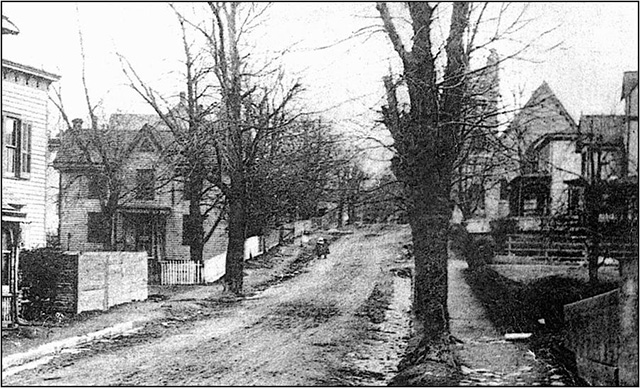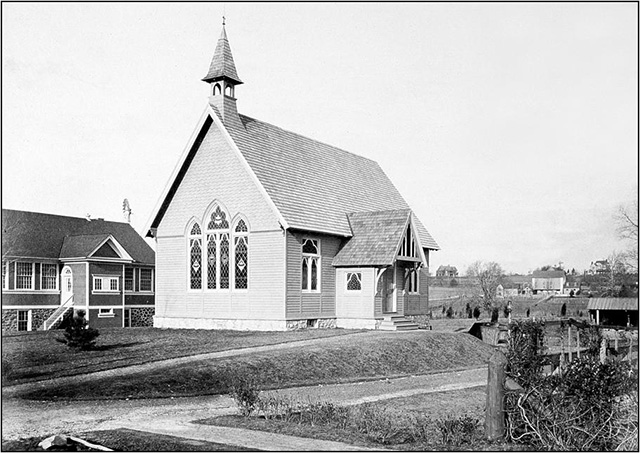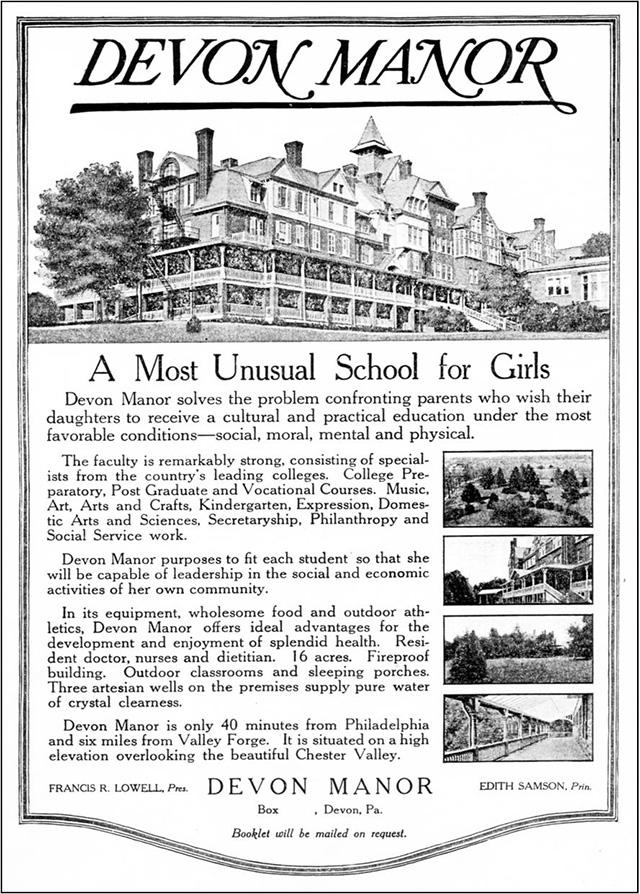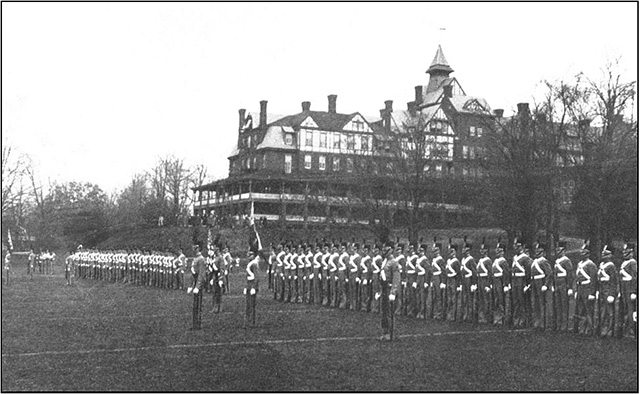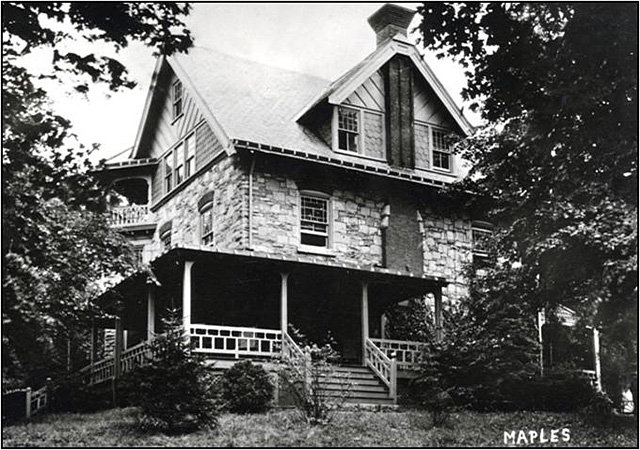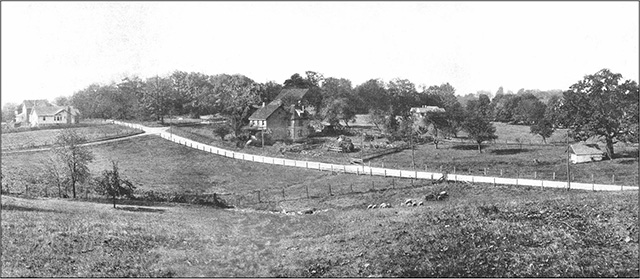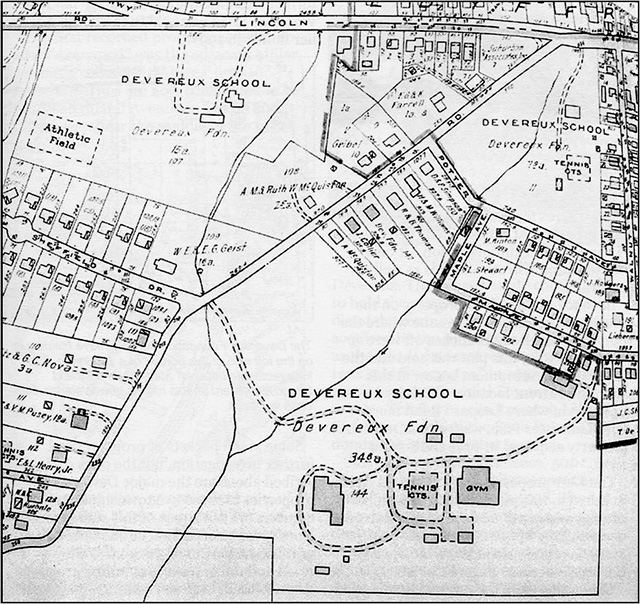|
Home : Quarterly Archives : Volume 43 |
||||||||||||||||||||||
Tredyffrin Easttown Historical Society |
||||||||||||||||||||||
|
Source: Spring 2006 Volume 43 Number 2, Pages 43–52 PRIVATE SCHOOLS IN EASTTOWN TOWNSHIP
We can say with certainty that Pennsylvania has a long history. The same can also be said about schools and education in the Commonwealth. In the “Frame of Government,” a set of laws and regulations drawn up by William Penn in England for the control of his colony and made part of its original charter, there is mention of public schools in paragraph 12 and a committee on manners, education, and arts in paragraph 13. At a time when education was almost universally thought of as belonging to the home and the church, this law provided not only for universal compulsory elementary education but for universal vocational education as well, all as a function of government. However, in fact, the government did not follow up on Penn's plans for schools. Despite the good intentions and strong advocacy of the founder, little was done to provide a system of education for the instruction of the children of Pennsylvania. In October 1683, Penn and his Provincial Council appointed Enock Flower to be schoolmaster in Philadelphia, but Flower's school was short-lived, closing about 1689, although the exact date is not certain. George Keith came to Philadelphia in 1689 and for over a year had charge of a school that later became known as the Penn Charter School, the first institution of secondary education in Pennsylvania. However, due to the quarrels between Penn and the Council, little legislation of any kind was enacted, and due to the “neglect and miscarriage of government,” the provisions of the proprietary charter were not carried out. From the time of the final departure of Penn from Pennsylvania in 1701, thus becoming, in effect, an absentee landlord, until after his death and even later after the War for Independence—a period of nearly a hundred years—practically nothing is found in the general laws of Pennsylvania regarding education. At the risk of oversimplifying, it might be said that the largest group of settlers of the Colonial era, the Quakers, were not particularly interested in higher education. What education took place, was offered to children by the itinerant schoolmaster or, in some minority groups of immigrants, by the parochial school. The Quakers lacked an educated ministry, the great educational force that early led to the founding of Harvard and Yale and Princeton. This being the year we celebrate the tercentenary of Benjamin Franklin's birth, we mention his contribution to Pennsylvania education in the promotion of an academy at Fourth and Arch Streets, Philadelphia, located in the building erected for public worship when Reverend George Whitefield, the celebrated evangelist, first preached in it in 1740. The University of Pennsylvania traces its history to the Charity School, organized on September 25, 1740, housed in this structure. Franklin happened to be on the board of the Great Hall, which had fallen into disuse as religious revivalism waned. He was thus able to negotiate a deal to have the new academy take over the building, divide it into floors and classrooms, and leave some space available for visiting preachers and the school for poor children. The academy opened in January 1751 and was known as the College of Philadelphia. Later, in 1779, it was taken over by the state and became the University of the State of Pennsylvania. In 1791 it became the University of Pennsylvania. A watershed event in Pennsylvania education, the Law of 1834, also known as the Common School Act, finally made possible the establishment of a free public schools system. It provided for counties to take responsibility for oversight of public schools within their boundaries and for townships and boroughs to become school districts. Citizens voted on acceptance or rejection of the public school act in their district—not too dissimilar from what happened recently in Pennsylvania with Act 72 establishing ground rules for allocating state gambling money back to local school districts. The vote of the people to agree to provide free schooling for all children took place in September 1834; opposition was considerable. Of the 44 school districts in Chester County, only seventeen accepted the provisions of the 1834 Law. Among those who voted in the affirmative were both Easttown and Tredyffrin Townships. Many years elapsed, however, before all municipalities joined the system and public schooling became universal in Pennsylvania. As public schools began to thrive, private schools also offered alternative educational opportunities.
Local historian Franklin Burns tells about one of the earliest private schools located here. Around 1877, Philadelphians Mrs. Martha (Freeman) Doran, wife of James T. Doran, with her maiden sister, Miss Sarah Freeman, opened the Spring Cottage Seminary on the east side of Church Avenue in Berwyn. The date may have been earlier than that, as the records of the local church show that the Dorans were added to the rolls on April 2, 1873. The buildings housing the post office and the local bank did not exist when the school operated and the large shady grounds of the property extended to the Lancaster Turnpike. Not until 1888 did the view of the roadway become obscured by the erection of the bank. The school was filled to its limited capacity for some years by the youths and maidens of the neighborhood, eager for a higher education than the public schools could afford. The Freeman sisters taught French, Latin, and mathematics, along with English, and vocal and instrumental music. A complete roll of the pupils is not available, but the incomplete list includes members of the Buddy, Burns, Fritz, McLeod, Sharp, Stauffer, Webster, Wentworth, and Wetherill families. Later, James Doran, known to be a gifted mathematician, took over the direction of the school, and a new building was occupied further east. The house, now known as 17 Main Avenue, still exists. In 1967 the bank installed a free-standing, drive-through teller operation and the second school building, which had been converted to a double house at 11-13 Main Avenue, was demolished.
Spring Cottage Seminary, 17 Main Avenue, Berwyn, is shown at the left edge. An adjacent school building at 11-13 Main Avenue is now demolished. 1906 postcard view courtesy of the author. When Mr. Doran moved his private school from Berwyn to Malvern on April 1, 1888, the Malvern newspaper described him as a “popular educator” who would provide a “proper education.” Later that year the coed Malvern English and Classical School listed in a newspaper advertisement “instructions in Modern Languages, the various departments of Natural Science, the Higher Mathematics, Vocal and Instrumental Music, and other branches of study essential to a thorough and finished education.” Some fifty years later, Mr. Burns reminisced that although Berwyn in 1878 appeared to be a typical little rural village devoted wholly to the simple life, a number of its leading citizens had seen something of the of the world and were least susceptible to the petty prejudices of a contracted existence. Burns said, “One could easily compare the mental equipment of a large percentage of its inhabitants at this time with that of a small college settlement,” and, he continued, “that mythical individual, the average citizen of our community, can never hope to again attain the high standard for talent and ability displayed at this period.”
Devon School, at left, and Chapel. 1893 photograph by Lucy Sampson. Courtesy Eva Noll. The developers of Devon donated a piece of ground on the north side of Berkley Road for a chapel which was constructed in 1893. Adjacent to the chapel on the west, they also made provision for a school. According to the 1935 Historic Marker Survey files at the Chester County Historical Society, Miss Emma Harrar said,: The building was put up probably between 1890 and 1900, for use as a school, by Coffin & Altemus—[developers of much of Devon and builders of the Devon Inn]. It was only used as a school for about a year at this time and because of dissension was closed. It stood idle for several years, and about 1900 Miss Harrar started a day school there for boys and girls and called it the Devon School. She ran it as such until 1905 and up to that time it was a one-story building. In 1905 she added a second story and changed it to a boarding school for girls of about nine to fifteen years of age, also taking younger boys and girls as day pupils, and calling it by the same name. In 1911, she discontinued the school and began using the building, which had been remodeled to three stories as a boarding house, calling it the Harrar Inn. Miss Harrar was said to have pictures of the school as it was when she bought it, after she remodeled it in 1905, and as it was in 1935. The building, as further remodeled, still exists.
A full page advertisement in The Church News of the Diocese of Pennsylvania for April 1917—the month the United States entered World War I—announced information about another school, Devon Manor.
April 1917 advertisement for Devon Manor in The Church News of the Diocese of Pennsylvania. The founder and president of the school was Francis R. Lowell and the principal was Miss Edith Samson. The advertisement expressed confidence that, “Devon Manor solves the problem confronting parents who wish their daughters to receive a cultural and practical education under the most favorable conditions—social, moral, mental, and physical.” The school was located on the property long known as the Devon Inn and familiar for years to Philadelphia society folk; especially those interested in horse shows. The old inn, established in 1882, was in eclipse as the automobile had brought an end to its glory days. In April 1914 owners John W. and Ellen Simmons Patten sold it and about 14 acres of ground—the block surrounded by Waterloo, Berkley, Dorset, and Chester Roads—to William A. Hamilton. Mrs. Patten was the sister of Miss Mary Simmons who owned and managed the Devon Inn for a number of years prior to her death in 1910. The new owner operated it as a suburban hotel, but the venture apparently was not successful. He defaulted on the mortgage, and the sheriff by deed poll conveyed the property to the mortgage holder. Devon Manor school then occupied the premises. It was a grand location, well suited to house a school. The Ardmore Chronicle reported the activities surrounding the opening: The old Inn has been remodeled and made into a handsome and commodious school for girls. Some of the most prominent Philadelphians are interested in the school: Mr. and Mrs. E. T. Stotesbury, George McFadden, Joseph H. Steele, Mrs. Charles C. Harrison, Mrs. Archibald Barklie, Mrs. Thomas Leaming, Mrs. Edward F. Beale, Mrs. John Hampton Barnes, Mrs. John A. Brown jr., Mrs. Edward Roberts, Mrs. C. Emory McMichael, Mrs. William C. Bullitt, Mrs. J. G. Cassatt, Mrs. Francis Forbes Milne, and Mrs. Charles M. Lea. Ex-President William H. Taft was on hand October 3, 1917 to address the first entering class of a hundred or more girls. Mr. Taft said he was taking a special interest in the school because its president, Francis R. Lowell, was one of the first students he had when he found refuge at Yale, “After,” as he put it, “I left office with the undisguised consent of the American people.” U.S. Senator Philander C. Knox, a local resident, was also expected at the exercises, but he telegraphed his regrets at the last moment. Bishop Rt. Reverend Thomas J. Garland, as chairman of the Board of Directors, presided, and Miss M. Carey Thomas, president of Bryn Mawr College, and others graced the platform. The hall was filled with residents of the neighborhood. The school offered vocational training to girls not wishing to go to college. There were also cultural classes, and much emphasis was placed on athletic development. Bishop Garland was Chairman of the directors; the other directors were J. Clifton Buck, Powell Evans, Dr. Edwin E. Graham, Dr. J. Packard Laird, Francis R. Lowell, Edmund B. McCarthy, the Reverend Dr. Rufus W. Miller, Dr. George C. Stout, Frank Graham Thomson, and William H. Wilson. Devon Manor school apparently ceased to operate in the summer of 1923. The West Chester Daily Local News on November 17, 1923 reported that Chester County sheriff Pechin had levied on the personal property of the school and advertised to sell the same at a public sale. Thereafter, Devon Manor school entered into bankruptcy and the real estate was returned to the mortgagor, the heirs of William F. Leech. In March of 1926 a syndicate composed of Guy B. Wheeler, T. L. Latta, Thomas R. Latta, and Edgar C. VanDyke, called Devon Park Realty Corp., acquired the property and opened it as the Devon Park Hotel. It was managed by A. Stanley Stanford, who had been the manager of the Devon Inn fifteen years earlier after Miss Mary Simmons died. Once again it briefly became a center of Main Line society, but in two years the syndicate was forced to reorganize.
In April 1928, Captain Milton G. Baker founded Valley Forge Military Academy to occupy space in what had been the Devon Park Hotel. The first semester began in September 1928 with Captain Baker as superintendent, a staff of thirteen, and an enrollment of 117 cadets, which was considered to be very large for a newly-opened military school. Valley Forge Military Academy was to stay at Devon for only a few months, however, for on January 18, 1929, a disastrous fire swept through the old building and totally destroyed it. Fortunately, the cadets and military instructors filed to safety when assembly was called. During the brief period of its existence in Devon, a photograph of the cadets lined up in dress parade on the lawn of the Devon Inn was issued as a post card which can be found in collections even today.
Valley Forge Military Academy cadets at parade on the grounds of the former Devon Park Hotel. After the fire, the Academy moved to the site formerly occupied by St. Luke's School at Radnor and Eagle Roads, north of Wayne, where it is still located. A new board was organized to take over the operation of the school which subsequently grew to be an educational institution known throughout the world. General Baker served as its superintendent until 1971.
In the early years of the twentieth century, new ideas and approaches to education began to percolate through the Pennsylvania schools establishment. Terms such as “progressive” or “child centered” education came into use. A 1900 book, The Century of the Child, by Swedish feminist and educator, Ellen Key, apparently spurred some of these concepts. In the United States, the so-called progressive movement in education was initiated by American educator Francis Wayland Parker, who introduced curriculum and teaching methods based upon the principles of child growth, development, and interest. American philosopher, psychologist, and educator John Dewey was also among the influential thinkers of the time. What are the odds that not one, not two, but three forward thinking teachers inspired by these concepts would open schools in Easttown in the second decade of the twentieth century? It may sound highly unlikely, but it did, in fact, happen.
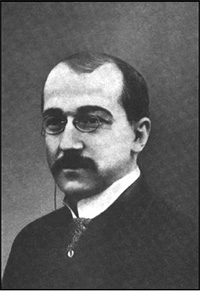
Allen Latshaw, a native of Spring City, an accomplished musician, teacher, lecturer, and early-day psychologist, was the founder and director of The Latshaw School in Berwyn and Philadelphia. He began his career about 1891, as a teacher in the public schools and rose from grade work until he became supervisor of drawing and vocational training in many public and private schools in Philadelphia and the surrounding counties. His attention was early attracted to “backward” pupils, and gradually the children who were making trouble in other classes or were failing to progress came to him for the help necessary for adjustment to their regular work. Seeing a compelling need, he decided to devote his whole time to developing the minds of developmentally challenged children. The Latshaw School formally opened as a day school in 1904 and as a boarding school in 1912. The day school was located at Latshaw's home on the 3400 block of Sansom Street in west Philadelphia. In the spring of 1914 he moved his home and the boarding school to The Maples, an estate on the southeast corner of Paoli and Leopard Roads in Berwyn that he acquired from W. Atlee Potter. In a 44-page illustrated bulletin published in 1915, Latshaw described the main building of the school as, “a commodious private house, resting on the summit of a gentle slope, with open country on three sides. The grounds are four acres in extent, with space for all kinds of outdoor amusements.”
The Maples, the main building of the Latshaw School. Latshaw's booklet continued: ... the healthfulness and beauty of the location is well attested by the magnificent estates in the immediate neighborhood. The continuous round of interesting mental and physical activities, pure country air and food, and the freedom of outdoor life have resulted in remarkable health for all children under our care. ... Remember that this is a home, a family – not an institution ... we are liberators, not jailers; that our mission in life is to free these unfortunates from restrictions. Our school work is not simply the coaching in language, mathematics, grammar, deportment, etc., but it is also the training and developing of the real nature of the child by strictly individual attention so that he will be enabled in due time to catch up in the race and take his place, without undue effort, ...
The Maples, looking southwest on Leopard Road. The farm house of the Potter family, shown on the right side of Leopard Road, Berwyn, was occupied in 1914 by Atlee Potter, who had, it is believed, earlier built the mansion house used by Mr. Latshaw for his school. From The Latshaw School by Allen Latshaw. Berwyn, 1915. What is truly remarkable about this school is its projecting much of today's current thought in special education in a school founded over a hundred years ago. Special schools have become more sophisticated, but Latshaw's basic principles of understanding, patience, and sympathy are still very much in evidence in the better facilities. Private schools were expensive then, and the $1,200 price tag for a year's tuition and board was steep for 1912. By 1932 Latshaw had closed the school and become less active, taking individual students for a time and doing some consulting. But Allen Latshaw had made his mark as one of the lesser-known “great” teachers. He died on February 11, 1940 at about age 79. The following year, the Maples property was acquired by The Devereux Foundation for use by the Devereux Schools. In 1978 Devereux sold the site to the Trinity Senior Housing Corporation where they built the senior housing apartments known today as Trinity House.
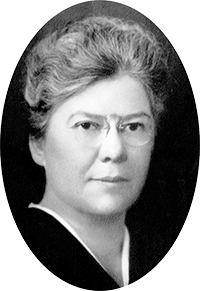
A second young teacher, Helena Devereux, came to Easttown from Philadelphia on January 1, 1918, intent on acquiring a house on Highland Avenue in Devon that was available for rent, and with a vision to help children with special needs. She made a decision to rent the house—the owner called it Acerwood—for $100 a month, and having only $94 in savings, she borrowed the remaining $6 for the first month's rent from a friend. After resigning from her Philadelphia Normal School job at the end of the school year, Miss Devereux moved into the house, which came to be known as Devereux Stone, on May 1st, bringing with her the group of students—numbering 12—currently in her care and her parents. During that first year of the school's existence, its founder worked unbelievable 20-hour days. With limited financial resources, she was forced to take on everything from psychological testing to the laundry. Apparently Helena's father, Arthur Devereux, was aged when the move was made to Devon. He was a person filled with an entrepreneurial spirit which he passed on to his daughter. She was born February 2, 1885 when he was about 60. 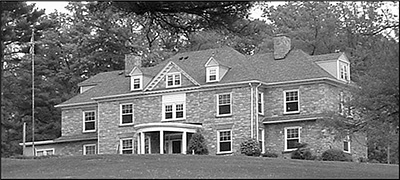
Langdale, built as the home of Henry T. Coates off of Leopard Road in Berwyn, was acquired by Helena Devereux in 1920. Photograph by Joyce A. Post, May 2006. 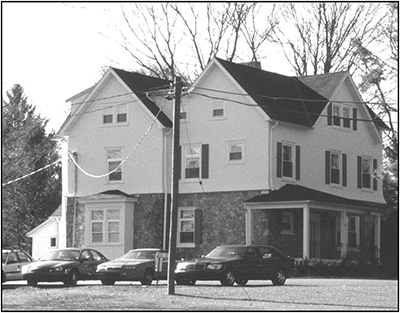
Above: Antrim, originally the home of Charles B. Hart and located on Old
Lancaster Road in Devon was purchased by Miss Devereux in 1923. Photograph by
the author, ca. 2001. 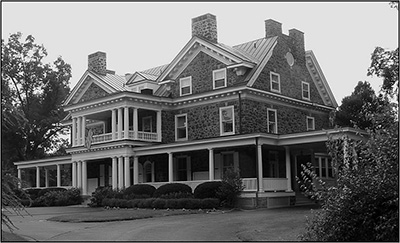
A story is told that, in earlier years, following Arthur's marriage in England, he came to America with his bride and took up landscape architecture as a vocation. In the process, he became involved in work at an estate later acquired by Devereux. This was Langdale, home of Henry Troth Coates, one of three Coates brothers of Philadelphia who constructed adjoining estate houses on the southern borders of Berwyn in the latter years of the nineteenth century. Coates died at Langdale in 1910, and his widow lived there until her death in 1918. The couple had no children. Arthur Devereux was said to be the first to import native rhododendron from the Pocono mountains, many of which still flourish on the estate. In 1919, Miss Devereux purchased her rented quarters at Devereux Stone on Highland Avenue, as well as the adjacent Gables estate, from their common owner with 100% mortgages. This was the time when Devon development was beginning to unravel, and its wonderful real estate was available on extremely attractive terms. Having acquired the two properties, she was able to house the boys and girls separately. Over the course of two years, enrollment doubled at the school, enabling her to hire two experienced teachers. Miss Devereux added the estate in Berwyn she called the Manor School to her community on April 1, 1920. It was to house the younger of the developmentally disabled children in her care. Today it is still in use as part of the Whitlock Center. The Hall building in Berwyn and the Charles B. Hart property in Devon, called Antrim, came under the control of Miss Devereux in 1922. This permitted separation of groups into younger and older boys and girls, based on each child's abilities. The same year saw the official change of the school's name to Devereux Schools. In 1924, Helena Devereux married James Fentress, a widower of a friend. Fentress was a business executive based in Winnetka, Illinois. James and Helena led a very private life during twenty-one years of marriage, often spending weekends in Illinois. James Fentress was an avid supporter of Devereux Schools and his wife's fierce independence. The Devereux Schools were incorporated under a private charter in 1927, with Helena Devereux holding the stock as founder. Miss Devereux was sensitive to the needs of children who were different, backward, or who had fallen behind their classmates and were basically ignored. She focused her energies on helping them. Her premise was: happy, contented children learn better and more easily than unhappy, maladjusted ones with similar intelligence. She concluded that some children labeled “feeble minded” really had normal intelligence but were simply too upset or dispirited to learn.
Three Devereux School properties, clockwise from upper left, are now the Highland homes, Trinity House, and the Whitlock Center. From the 1963 Property Atlas of the Main Line, Penna. Volume Two, Franklin Survey Company. As her reputation as a special needs educator grew and news of her work spread, some professionals came to Easttown to observe her approach – and stayed on to share in the program. By 1938, Pennsylvania granted a nonprofit charter to establish The Devereux Foundation, the operation of which began two years later when Helena Devereux transferred all assets and properties of the schools to the foundation. In 1955, Devereux took an important step toward establishing the Foundation as a major educational resource by training seven interns from several universities, including Teachers College of Columbia University, Pennsylvania State University, the University of Pennsylvania, Temple University, the Bryn Mawr College School of Social Work, and Jefferson Medical College, in the Devereux Department of Psychology and Education. This endeavor developed into Devereux's Institute of Clinical Training and Research, which has prepared thousands of young professionals. Miss Devereux was honored in 1958 by the American Psychiatric Association as the sixth woman named as an Honorary Fellow in the association's 114-year history and the first woman without a medical degree to be so honored. Today, her philosophies of education continue to be carried out in programs and centers for both young children, troubled teens, and mentally challenged adults. By the time Helena Devereux died in her Devon home on November 17, 1975, she was considered a pioneer of residential therapy, a visionary, and a genius of multi-disciplinary treatment for children with special needs. Today her legacy lives on through the more than 6,500 individuals who staff Devereux centers in twelve states and the District of Columbia, serving over 15,000 children and adults each year. In a message to her staff on her 90th birthday, she summed up her life: “My interest in trying to solve the puzzling blocks to the personality development of children who need help to help themselves began in 1908, and the effort has given satisfaction and fulfillment to all my years.”
Dr. Lightner Witmer, a clinical psychologist, was the third educator and he located in Devon. His school educated exceptional children of all kinds and ages, both boarding and day pupils, and was limited to twelve children in all. Dr. Witmer was born in Philadelphia on June 28, 1867, the son of David Lightner Witmer, a druggist, and Katherine Huchel. He attended the Episcopal Academy and received a B.A. degree at the University of Pennsylvania in 1888. He finished his Ph.D. work at the University of Leipzig under German psychologist Wilhelm Wundt in 1892 and was awarded his degree a year later. Witmer served in the military during the Spanish-American War and headed a Red Cross unit in Italy during the first World War. In 1892 he joined the psychology faculty at the University of Pennsylvania where he remained until his retirement in 1937. In 1904 he married Emma Repplier; they had no children. Dr. Witmer died on July 19, 1956 in Philadelphia. The school founded by Dr. Witmer in 1907 was first located in Rose Valley and later in Media. It was brought to Devon in the fall of 1921. A staff of five teachers provided individual oversight and teaching. Children were accepted for a day, a week, a month, or by the year for educational guidance or merely for examinations. The school was located at an estate once known as Llangollen on the north side of Arlington Road, near Waterloo Road and the Devon railroad station. When the town was laid out by developers Coffin & Altemus, the Lancaster Turnpike—today's Old Lancaster Road—was north of the railroad, and Devon's streets to the south running east and west were named Arlington, Berkley, Chester, Devon, and Exeter Roads, a neat A-B-C-D-E alphabetical sequence. The use of the name of Devon Road never caught on, however, and Sugartown Road, already in everyday use, remained the preferred name for the road. In the early 1930s, a highways project placed today's Lancaster Avenue south of the railroad. 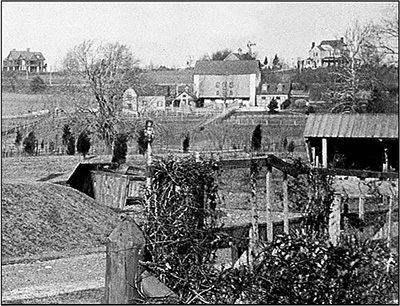
An 1893 photograph of what would become, in 1921, the Witmer School. The farm had been owned by Dr. Charles E. Thomas, whose father had also owned this property located just south of the Pennsylvania Railroad tracks in Devon. Dr. Witmer said, when interviewed at the time of the 1935 Historic Marker Survey, that he believed the main house—still standing today—was over 100 years old. It was a three-story stone farm house with walls three feet thick, an unusually fine brick-paved cellar with fireplace, and two outside entrances, opposite each other, equipped with heavy wooden double doors. The two main doorways, each with a marble step, opened into the two parts of the house. The family apparently lived in the western end adjoining the barn, and the other side was kept for guests, funerals, etc. There were no communicating doors between the two sides. The house was possibly used as an inn at one time. Large old fireplaces, one in each end wall, dominated the downstairs rooms, and the ones in the upper rooms were probably added around 1850 or later. Nearby, there was an old spring house to the south, at the base of the hill, and a barn, the walls of which were old; the rest having been destroyed by fire. A stream running through the property is one of the headwaters of Darby Creek, the source being not far to the northeast on the other side of the railroad. Dr. Witmer, who made additions to the house and barn, bought the property from Dr. Edwin E. Graham whose family called it “Eldonridge.” The previous owners, going back to at least 1887, were Dr. Charles E. Thomas, and his father, Dr. A. R. Thomas. During their ownership, the latter two built a smaller white clapboard residence west of the old house. It was expanded, was the scene of a fire, and is now part of the Devon Manor Nursing Care Community. Three Thomas children intermarried with children of Dr. R. B. Okie who was the village doctor practicing in Berwyn at the time.
Private schools have played an important part in Easttown's history. The story, essentially, of what happened when Devon, the grand summer resort, became the place NOT to be in the summer, can be blamed upon “technological advance” brought on by the automobile. The first of Henry Ford's Model “T” flivvers rolled off the production line in 1908. Devon had thrived on the transportation by train of its summer residents from Philadelphia. Now, as the roads were improved, they could go to the seashore or the mountains or wherever they chose. The sale of the Devon Inn in 1914 is evidence that they did choose other places. Luckily, some young, imaginative, education professionals knew exactly what to do with the surplus of Victorian mansions that had been built in Devon. Lovely large homes became available for their use at economical prices and terms just as they needed large spaces to carry on individualized one-on-one education. The schools conducted by Professor Latshaw in Berwyn and Dr. Witmer in Devon have disappeared and passed from memory, but the ongoing work of the Whitlock Center in Berwyn continually reminds us of the priceless legacy of Miss Devereux. Devon Manor school was consumed by financial toil. Later, the Valley Forge Military Academy survived fire in the same premises and has now prospered outside of Easttown. Buildings used by Dr. Witmer, Miss Harrar, and Mr. Doran remain but are no longer devoted to education. The private schools of Easttown each have their own unique story to tell.
Brind, David. The Helena T. Devereux Biography. Villanova: Devereux, 2004. Burns, Franklin L. “History of Berwyn.” ca.1930. Manuscript. Tredyffrin Easttown Historical Society archives. “Devon Manor, A Most Unusual School for Girls.” The Church News of the Diocese of Pennsylvania. April 1917 advertisement. “Easttown Township, Private Schools.” Chester County Historical Society Library, newspaper clipping file. Fry, C. Herbert. Easttown: Old in History, Young in Spirit, 1704-2004. Devon: ANRO Printing, 2004. Goshorn, Robert M. “Devon Inn.” Tredyffrin Easttown History Club Quarterly, Vol. 22, No. 4 (October 1984). pp. 125-138. Historic Marker Survey. 1935. Chester County Historical Society Library, West Chester, PA. Isaacson, Walter. Benjamin Franklin, An American Life. New York: Simon & Schuster Paperbacks, 2003. Latshaw, Allen. The Latshaw School. Berwyn: Self published, 1915. “Latshaw School, Learning Pioneer,” Daily Local News, ca.1973. McGill, Alice R. “Our ‘Landed Estates’ – Eldonridge.” Philadelphia Press Magazine, November 12, 1916. “Military School at Devon Burns; Students Escape.” Evening Bulletin, January 18, 1929. “New School [Devon Manor].” Ardmore Chronicle, September 29, 1917. “Opening Exercises of Devon Manor.” The Church News of the Diocese of Pennsylvania, November 1917. Post, J. B. “Devereux in Easttown and Tredyffrin Townships.” Tredyffrin Easttown History Club Quarterly, Vol. 41, No. 4 (Fall 2004). pp. 131-134. Schmitt, Nancy B., ed. A Century in Malvern. West Chester: Graphics Standard, Inc., 1989. Sweet, William Warren. The Story of Religion in America. New York: Harper, 1937. Session Book #2. Berwyn, PA.: Trinity Presbyterian Church, 1873. Walsh, Louise G. and Matthew J. Walsh. History and Organization of Education in Pennsylvania. Indiana, PA.: State Teachers College, 1928. Ward, Robert L. “Public Schools of Easttown and Tredyffrin Townships, Part I.” Tredyffrin Easttown History Club Quarterly, Vol. 35, No. 2 (April 1997). pp. 55-58. “Witmer, Lightner.” in John A. Garraty and Mark C. Carnes, eds., American National Biography, vol. 23. New York: Oxford University Press, 1999. pp. 707-708. Herb Fry is a frequent contributor to the Quarterly and is the author of Easttown: Old in History, Young in Spirit, 1704-2004. This was a presentation at the February 19, 2006 meeting of the Tredyffrin Easttown Historical Society. |
||||||||||||||||||||||
